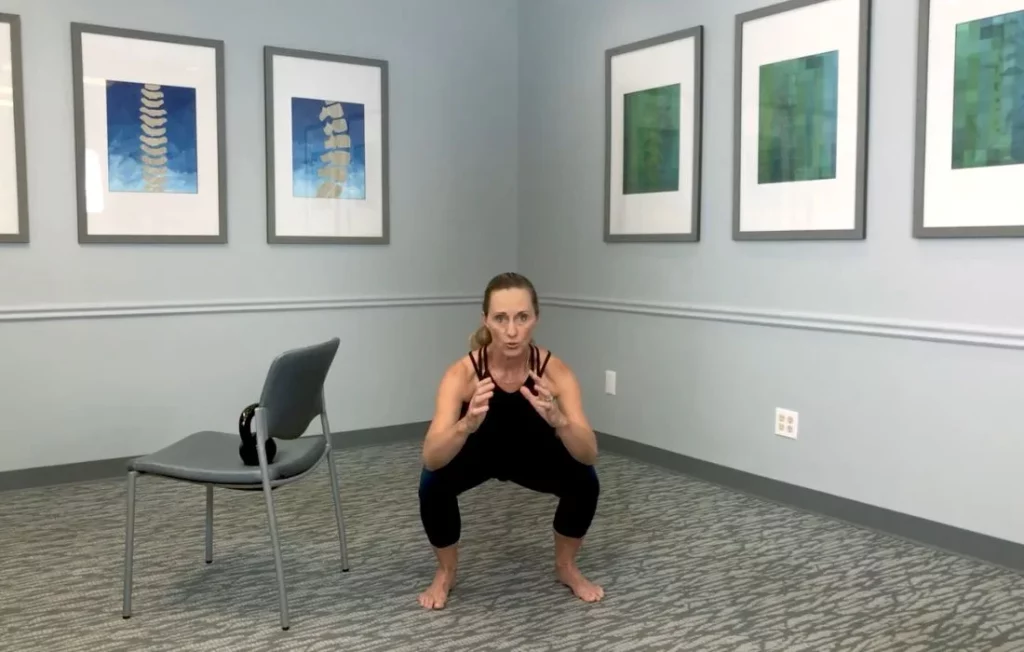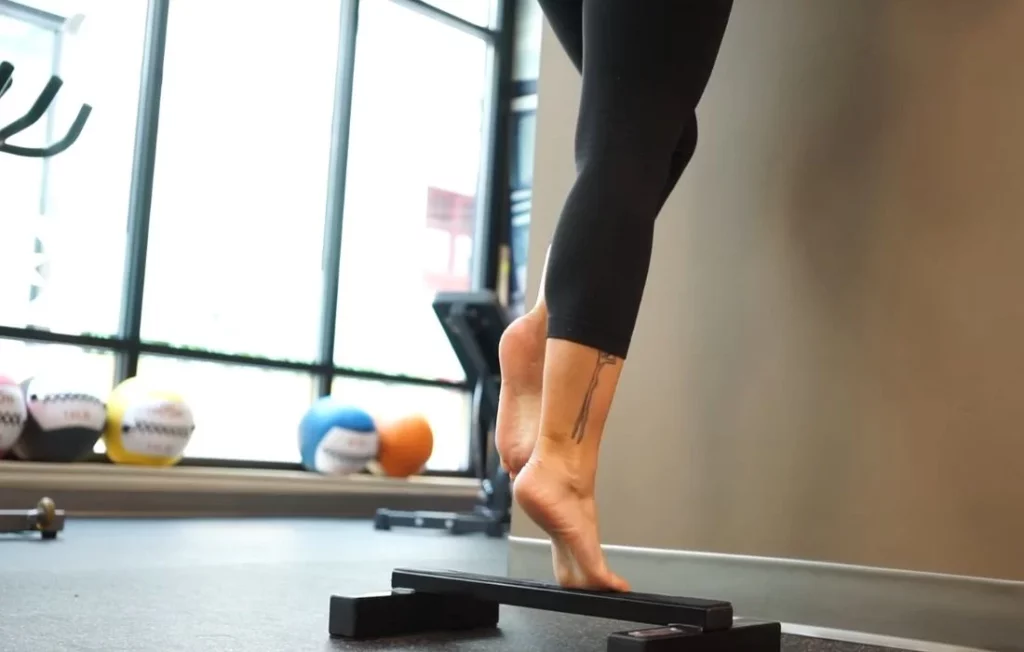Are you an aspiring sprinter or a long-distance enthusiast aiming to conquer the running world? Regardless of your running goals, having strong and well-conditioned legs can make a world of difference in your performance. In this guide, we’ll explore why leg strength matters for runners and provide you with a comprehensive list of the best leg day exercises to enhance your running game.
As a runner, you’re well aware of the incredible demands your sport places on your legs. Whether you’re sprinting, jogging, or tackling marathons, strong and flexible leg muscles are crucial for peak performance and injury prevention. In this article, we’ll delve into the world of leg exercises and explore the best leg exerciser for adults, tailored specifically for runners. So, lace up your running shoes and let’s dive into the best leg exerciser options!
Why Strong Legs Matter for Runners
The Anatomy of a Runner’s Leg
Before we dive into the exercises, let’s get acquainted with the intricate machinery that powers your runs. Your leg muscles are a complex ensemble of power and precision. From the quadriceps that propel you forward to the calves that provide stability, each muscle group plays a vital role in your performance.
Benefits of Strong Leg Muscles
Strong legs aren’t just for show. They offer a plethora of benefits for runners. They improve running economy, reduce the risk of injury, and even boost your speed. Discover how your leg muscles can revolutionize your running experience.
Essential Leg Exercises for Runners
Squats: The Foundation of Leg Strength
If you’re a runner looking to improve your performance, Leg Lifts Exercises might not be the first exercise that comes to mind. However, they are a powerhouse when it comes to building leg strength and can significantly benefit your running journey. In this article, we’ll explore the importance of strong legs for runners and delve into the world of squats, covering various types, proper form, and how to incorporate them into your running routine for the best leg slimming results.

Building Leg Strength with Squats
As a runner, your legs are your most valuable asset. Strong leg muscles can help you run faster, longer, and with less risk of injury. Squats are a compound exercise that targets multiple muscle groups in your legs, including your quadriceps, hamstrings, and glutes. These muscles are essential for generating power and maintaining stability while running.
Types of Squats
Before we get into the nitty-gritty of squatting, let’s explore the different types of squats you can incorporate into your workout routine. Some popular variations include:
- Bodyweight Squats: Perfect for beginners, these squats use only your body weight for resistance.
- Goblet Squats: Holding a dumbbell or kettlebell close to your chest adds intensity to your squats.
- Barbell Back Squats: This classic squat variation involves placing a barbell on your upper back for added weight.
- Front Squats: The barbell rests on the front of your shoulders, targeting your quads and core.
- Bulgarian Split Squats: These single-leg squats are excellent for balance and muscle imbalances.
Proper Squat Form
To reap the benefits of squats and avoid injuries, it’s crucial to maintain proper form. Follow these steps for a safe and effective squat:
- Position: Stand with your feet shoulder-width apart.
- Posture: Keep your chest up and your back straight.
- Depth: Lower your body until your thighs are parallel to the ground or as low as your mobility allows.
- Knees: Ensure your knees track over your toes and do not collapse inward.
- Breathing: Inhale as you lower yourself and exhale as you push back up.
Common Mistakes to Avoid
While squats are a fantastic exercise, they can lead to injuries if done incorrectly. Avoid these common mistakes:
- Overarching Your Back: Maintain a neutral spine to prevent lower back strain.
- Using Too Much Weight: Start with a manageable weight to avoid muscle strains.
- Not Going Deep Enough: Partial squats don’t engage all the necessary muscles.
- Knee Overextension: Ensure your knees don’t extend beyond your toes.
Incorporating squats into your training regimen can be a game-changer for runners. Whether you’re aiming for better performance, injury prevention, or specific running goals, squats have something to offer. Remember, consistency is key, so start slow, maintain proper form, and watch your running improve.
Lunges: Adding Variety to Your Routine
If you’re a runner, you know that having strong legs is crucial for achieving peak performance and preventing injuries. Bodyweight exercises for legs are essential in this regard, and one of the most effective leg exercises for runners is the lunge. In this article, we’ll explore why lunges are essential, how to do them correctly, the different types of lunges, and how to incorporate them into your running routine, all of which can contribute to improving circulation in your legs.

The Importance of Strong Legs for Running
Strong Legs: Better Running
As a runner, your legs are your powerhouse. Strong leg muscles can help you run faster, longer, and with more stability. They provide the necessary support for your joints, reducing the risk of injuries like knee pain and shin splints.
Balancing Muscle Groups
Lunges work multiple muscle groups simultaneously, promoting balanced muscle development. This balance is vital for maintaining proper running form and preventing muscle imbalances that can lead to injuries.
What Are Lunges?
Lunges are a lower-body exercise that targets your quadriceps, hamstrings, glutes, and calves. They involve stepping forward, backward, or to the side while bending your knees at 90-degree angles. Lunges can be performed without equipment, making them ideal for runners looking to strengthen their legs without hitting the gym.
Types of Lunges
Forward Lunges
Forward lunges involve stepping one foot forward and bending the front knee while keeping the back leg straight. This variation primarily targets the quadriceps and improves balance.
Reverse Lunges
In reverse lunges, you step one foot backward and bend both knees to lower your body. This variation places less stress on the knees and focuses on the hamstrings and glutes.
Walking Lunges
Walking lunges involve taking alternating steps forward with each lunge. This dynamic movement engages your leg muscles and improves coordination, making it an excellent choice for runners.
Proper Lunge Form
To maximize the benefits of lunges and reduce the risk of injury, it’s essential to maintain proper form:
- Stand with your feet hip-width apart.
- Take a step forward or backward, keeping your core engaged.
- Bend your front knee to a 90-degree angle while keeping your back knee hovering above the ground.
- Ensure your knee does not extend past your toes.
- Push through your front heel to return to the starting position.
Benefits of Lunges
Lunges offer several benefits for runners:
- Increased Leg Strength: Lunges strengthen the muscles that power your runs, improving speed and endurance.
- Improved Balance: Lunges enhance proprioception and balance, helping you maintain a stable stride.
- Injury Prevention: Strong leg muscles protect your joints and reduce the risk of common running injuries.
Precautions and Common Mistakes
While lunges are highly beneficial, they can lead to injury if done incorrectly. Avoid these common mistakes:
- Over striding: Keep your steps at a comfortable length to prevent knee strain.
- Lack of Balance: Use a wall or chair for support if you struggle with balance during lunges.
- Poor Posture: Maintain an upright posture throughout the movement to protect your back.
- Ignoring Pain: If you experience pain during lunges, stop immediately and consult a healthcare professional.
Lunges are a must-have exercise in every runner’s arsenal. They not only enhance leg strength but also contribute to better balance and injury prevention. By incorporating lunges into your routine with proper form and precautions, you can take your running performance to new heights.
Calf Raises: Building Lower Leg Strength
If you’re a runner looking to up your game and reduce the risk of injury, you’ve probably heard of calf raises. These simple yet powerful leg exercises can make a significant difference in your running performance. In this article, we’ll dive into why calf raises are essential for runners, the different variations you can incorporate into your routine, proper form and technique, and how to balance them with other leg workouts like deadlifts and muscle growth.

The Importance of Strong Calves for Runners
The Anatomy of the Calf Muscles
Before we get into the exercises, let’s understand why strong calves matter. The calves consist of two main muscles: the gastrocnemius and the soleus. These muscles play a crucial role in running as they help propel you forward and absorb shock upon landing.
How Strong Calves Improve Running Performance
Strong calves can enhance your running performance in several ways. They provide the necessary push-off power during the toe-off phase of your stride, leading to more efficient and faster runs. Additionally, they help maintain stability and prevent overpronation, reducing the risk of injuries like shin splints and plantar fasciitis.
Calf Raise Variations for Runners
Now, let’s explore the various calf raise variations you can incorporate into your training routine.
Standing Calf Raises
Standing calf raises are the classic choice. You can do them with or without weights. Simply stand with your feet hip-width apart, lift your heels as high as possible, and lower them back down. Repeat for the desired number of repetitions.
Seated Calf Raises
Seated calf raises target the soleus muscle. Sit on a bench or chair with your knees bent at 90 degrees and your feet flat on the floor. Place a weight plate on your thighs and raise your heels while keeping your toes on the ground. Lower your heels and repeat.
Donkey Calf Raises
This variation requires a partner or a donkey calf-raise machine. Position yourself with your hips on a padded platform and your shoulders under the pads. Lift your heels as high as possible, then lower them back down.
Single-Leg Calf Raises
Single-leg calf raises add balance and symmetry to your leg muscles. Stand on one leg and perform calf raises as you would with both legs. Switch to the other leg to maintain balance.
Proper Form and Technique
Tips for Correct Calf Raise Form
To maximize the benefits and minimize the risk of injury, pay attention to your form. Keep your back straight, engage your core, and perform the movements slowly and deliberately. It’s essential to go through the full range of motion by lifting your heels as high as possible and lowering them below parallel.
Common Mistakes to Avoid
Avoid bouncing during calf raises, as this can strain your Achilles tendon. Also, don’t use excessive weights that compromise your form. Start with a weight that allows you to complete your desired repetitions with proper form.
Incorporating calf raises into your training routine is a smart move for any runner. Strong calves not only improve your running performance but also reduce the risk of injuries and contribute to better overall leg stability. Remember to maintain proper form, gradually increase the intensity, and balance your leg workouts for optimal results.
Advanced Leg Exercises for Dedicated Runners
Plyometric Jumps: Boosting Explosive Power
If you’re ready to take your running game to new heights, plyometric jumps are your secret weapon. We’ll explore how to safely incorporate these explosive exercises into your regimen. Plyometrics can be intense, but safety should always be a priority. Learn the precautions to avoid injury while maximizing gains.
Hill Sprints: Taking It to the Next Level
Hill sprints are the ultimate challenge for runners. Find out how these uphill battles can enhance your strength, endurance, and mental fortitude. Discover the strategies for integrating hill sprints into your training plan effectively and reaping the rewards.
The Importance of Flexibility
Yoga for Runners: Improving Flexibility
Flexibility is the key to preventing injuries and maintaining optimal running form. Explore how yoga can revolutionize your running journey. We’ll introduce you to yoga poses that specifically target leg flexibility, helping you stride with ease.
Stretching Routine: Post-Run Recovery
After an intense run, a proper stretching routine can aid in recovery and reduce muscle soreness. Learn the stretches that every runner should incorporate into their post-run ritual.
conclusion
In conclusion, strong and well-conditioned legs are the foundation of a successful running journey. Whether you’re a beginner or an experienced runner, these leg exercises can take your performance to new heights. So, lace up your running shoes and start incorporating these exercises into your training regimen to become a stronger, faster, and more resilient runner.

Chris David (Auther)
With my pen as my compass, I embark on a thrilling odyssey through the intricate landscape of health and fitness. In each blog post, I unveil the enigmatic realms of well-being, weaving together evidence-based wisdom, practical counsel, and a sprinkle of motivational stardust to illuminate your path toward boundless vitality and unwavering strength.
